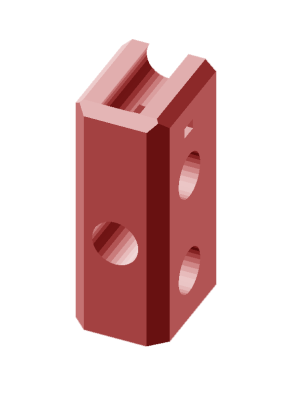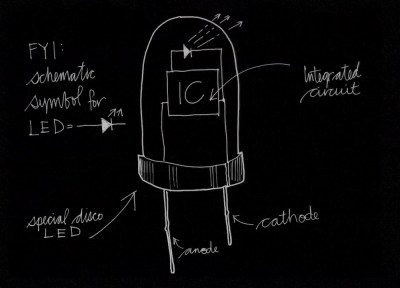“String Art” is the name of the art form that transforms thousands of nails and just as many feet of thread into unique masterpieces. Some artists have developed techniques to create photorealistic string art works, but until now, there was no way around the tedious and time-consuming manufacturing process. Depending on the size, it can take months to complete a single piece by hand.
Author: Moritz Walter114 Articles
Evolving Our Ideas To Build Something That Matters
When Jeffrey Brian “JB” Straubel built his first electric car in 2000, a modified 1984 Porsche 944, powered by two beefy DC motors, he did it mostly for fun and out of his own curiosity for power electronics. At that time, “EV” was already a hype among tinkerers and makers, but Straubel certainly pushed the concept to the limit. He designed his own charger, motor controller, and cooling system, capable of an estimated 288 kW (368 hp) peak power output. 20 lead-acid batteries were connected in series to power the 240 V drive train. With a 30-40 mile range the build was not only road capable but also set a world record for EV drag racing.

The project was never meant to change the world, but with Tesla Motors, which Straubel co-founded only a few years later, the old Porsche 944 may have mattered way more than originally intended. The explosive growth between 2000 and 2010 in the laptop computer market has brought forth performance and affordable energy storage technology and made it available to other applications, such as traction batteries. However, why did energy storage have to take the detour through a bazillion laptop computers until it arrived at electro mobility?
You certainly won’t find that grail of engineering by just trying hard. Rather than feverishly hunting down the next big thing or that fix for the world’s big problems, we sometimes need to remind ourselves that even a small improvement, a new approach or just a fun build may be just the right ‘next step’. We may eventually build all the things and solve all the problems, but looking at the past, we tend to not do so by force. We are much better at evolving our ideas continuously over time. And each step on the way still matters. Let’s dig a bit deeper into this concept and see where it takes us.
Continue reading “Evolving Our Ideas To Build Something That Matters”
Color-Changing LED Makes Techno Music
As much as we like addressable LEDs for their obedience, why do we always have to control everything? At least participants of the MusicMaker Hacklab, which was part of the Artefact Festival in February this year, have learned, that sometimes we should just sit down with our electronics and listen.
With the end of the Artefact Festival approaching, they still had this leftover color-changing LED from an otherwise scavenged toy reverb microphone. When powered by a 9 V battery, the LED would start a tiny light show, flashing, fading and mixing the very best out of its three primary colors. Acoustically, however, it spent most of its time in silent dignity.
As you may know, this kind of LED contains a tiny integrated circuit. This IC pulse-width-modulates the current through the light-emitting junctions in preprogrammed patterns, thus creating the colorful light effects.
To give the LED a voice, the participants added a 1 kΩ series resistor to the LED’s “anode”, which effectively translates variations in the current passing through the LED into measurable variations of voltage. This signal could then be fed into a small speaker or a mixing console. The LED expressed its gratitude for the life-changing modification by chanting its very own disco song.
This particular IC seems to operate at a switching frequency of about 1.1 kHz and the resulting square wave signal noticeably dominates the mix. However, not everything we hear there may be explained solely by the PWM. There are those rhythmic “thump” noises, shifts in pitch and amplitude of the sound and more to analyze and learn from. Not wanting to spoil your fun of making sense of the beeps and cracks (feel free to spoil as much as you want in the comments!), we just say enjoy the video and thanks to the people of the STUK Belgium for sharing their findings.
ImplicitCAD: Programmatic CAD Built With 3D Printing In Mind

Programmatic CAD, in particular the OpenSCAD language and IDE, has accompanied the maker movement for a while now. After its introduction in 2009, it quickly found its way into the 3D printing toolbox of many makers and eventually became what could be called an Industry Standard among open hardware labs, makerspaces and tinkerers. The Prusa i3, one of the most popular DIY 3D printers, was designed in OpenSCAD, and even Makerbot, the company that sold 100.000 3D printers, uses the language for its “Customizer” – an online tool that allows users to customize 3D printable models with minimal effort.
OpenSCAD is indeed a wonderful tool, and we have been using it a lot. We have become used to its quirks and accepted working with polygon mesh approximations of the models we are trying to design. We have made our peace with excessive rendering times, scripting workarounds and the pain of creating fillets, and we have learned to keep our aesthetic expectations low. We are happy with the fact that there is a way to programmatically create and share virtually any object, but sometimes we wish there was a better way in the open source world. Hint: there is.
Continue reading “ImplicitCAD: Programmatic CAD Built With 3D Printing In Mind”
Teslaphoresis: Tesla Coil Causes Self-Assembly In Carbon Nanotubes

This significant discovery in nanotechnology could also be the first practical use of a Tesla coil in modern times that goes beyond fun and education. A self-funded research team at Rice University has found that unordered heaps of carbon nanotubes will self-assemble into conductive wires when exposed to the electric field of a strong Tesla coil. The related paper by lead author and graduate student [Lindsey R. Bornhoeft], introduces the phenomenon as “Teslaphoresis”. Continue reading “Teslaphoresis: Tesla Coil Causes Self-Assembly In Carbon Nanotubes”
ESP8266 Based Irrigation Controller
If you just want to prevent your garden from slowly turning into a desert, have a look at the available off-the-shelf home automation solutions, pick one, lean back and let moisture monitoring and automated irrigation take over. If you want to get into electronics, learn PCB design and experience the personal victory that comes with all that, do what [Patrick] did, and build your own ESP8266 based irrigation controller. It’s also a lot of fun!
[Patrick] already had a strong software background and maintains his own open source home automation system, so building his own physical hardware to extend its functionality was a logical step. In particular, [Patrick] wanted to add four wirelessly controlled valves to the system.
Hack The Pentagon, Legally
The United States Department of Defense just launched the world’s first government-funded bug bounty program named HackThePentagon. Following the example of Facebook, Google, and other big US companies, the DoD finally provides “a legal avenue for the responsible disclosure of security vulnerabilities”.
However, breaking into the Pentagon’s weapon programs will still get you in trouble. This pilot program has a very limited scope of the Pentagon’s cafeteria menu some non-critical systems and is open only between April 18 and May 12 this year. In total, about $150,000 of bounties may be rewarded to responsible hackers.
Anyone can take part in the program, but to receive financial rewards, you need to fulfill a list of criteria. Your profile will undergo a criminal background check and certain restrictions based on your country of residence may apply. Also, to hack into the government’s computer system and get a tax return, you must be a US taxpayer in the first place.
Even though this framework turns the initiative more into one-month hacking contest than a permanently installed bug bounty program, it is certainly a good start. The program itself is hosted on HackerOne, a platform that aims to streamline the process of distributing bug bounties.



















